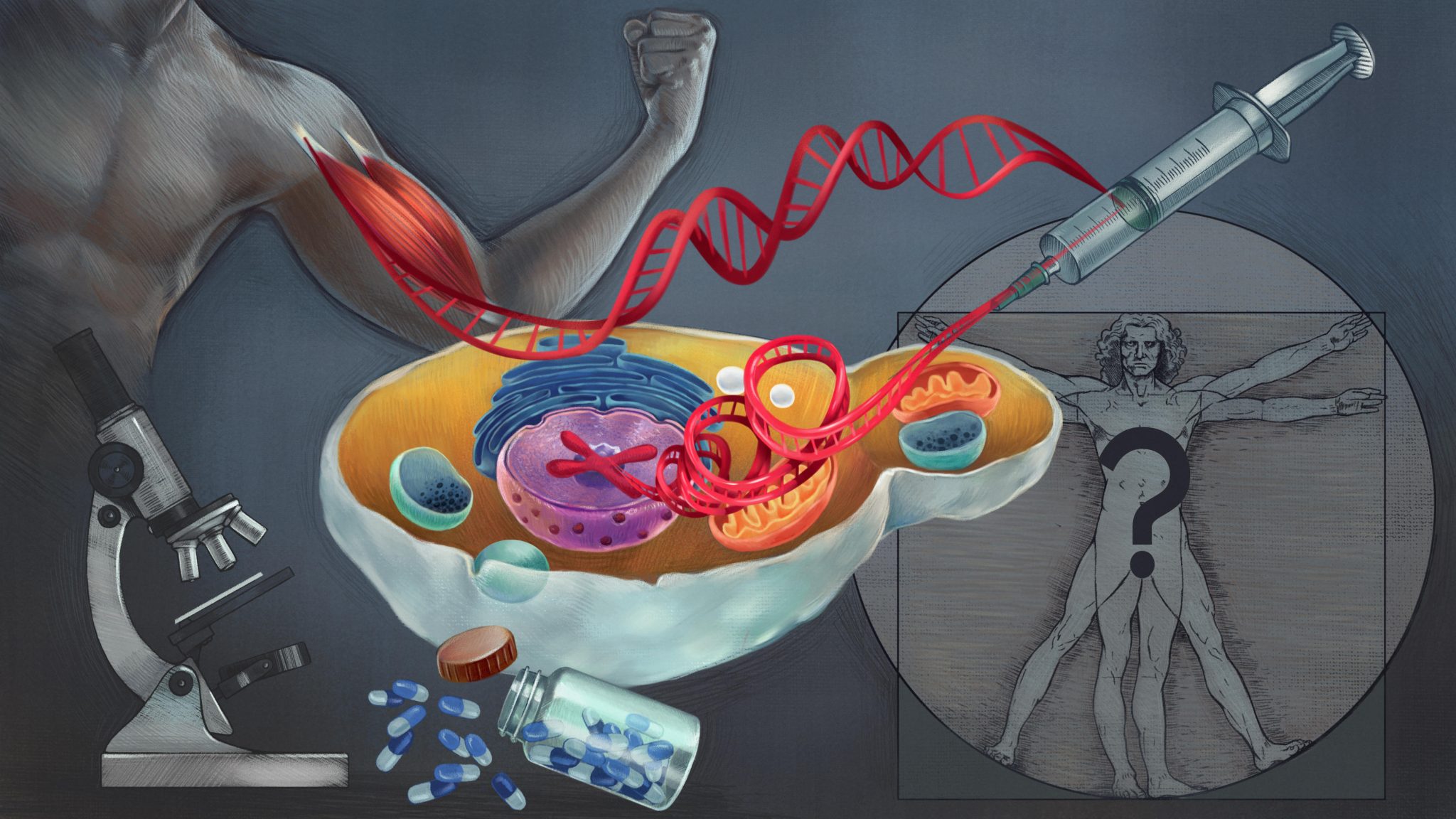
Daran-Lapujade’s lab took human DNA (in red) encoding core functions in muscle cells and inserted it into the DNA (chromosomes in purple) of a yeast cell (in yellow). The humanized yeast can be used as a tool for medical studies, for example in drug screening and cancer research. Credit: Ella Maru Studio / Pascale Daran-Lapujade
Delft University of Technology scientists have created baker’s yeast with human muscle genes.
Human muscle genes were successfully inserted into the DNA of baker’s yeast by biotechnologist Pascale Daran-Lapujade and her team at Delft University of Technology. For the first time, scientists have effectively inserted a crucial human characteristic into a yeast cell. Their research was recently published in the journal Cell Reports.
Daran-Lapujade’s lab introduced a characteristic to yeast cells that is regulated by a collection of 10 genes that humans cannot live without; they carry the blueprint for a process known as a metabolic pathway, which breaks down sugar to gather energy and produce cellular building blocks within muscle cells. Because this mechanism is involved in many disorders, including cancer, the modified yeast could be used in medical studies.
“Now that we understand the full process, medical scientists can use this humanized yeast model as a tool for drug screening and cancer research,” Daran-Lapujade says.
Humans and yeast are similar
According to Daran-Lapujade, there are a lot of similarities between yeast and a human being: “It seems weird since yeast lives as single cells and humans consist of a substantially more complex system, but the cells operate in a very similar way.”
As a result, scientists often transfer human genes into yeast. Because yeast removes all other interactions that may exist in the human body, it creates a clean environment in which researchers can analyze a single process.
“As compared to human cells or tissues, yeast is a fantastic organism for its simplicity to grow and its genetic accessibility: its DNA can be easily modified to address fundamental questions,” Daran-Lapujade explains. “Many pivotal discoveries such as the cell division cycle, were elucidated thanks to yeast.”
Humanized yeast
Daran-group Lapujade’s previously succeeded in designing artificial chromosomes that operate as a DNA platform for building new functions into yeast. They wanted to test how far they could go with adding several human genes and complete metabolic pathways, and whether the cells could still operate as a whole.
“What if we take the same group of genes that controls the sugar consumption and energy production of human muscles into yeast?” Daran-Lapujade wondered. “Can we humanize such an essential and complex function in yeast?”
Engineering a humanized yeast was surprisingly simple for Ph.D. students and co-first authors Francine Boonekamp and Ewout Knibbe.
“We didn’t just transplant the human genes into yeast, we also removed the corresponding yeast genes and completely replaced them with the human muscle genes”, Daran-Lapujade explains. “You might think that you cannot exchange the yeast version with the human one, because it’s such a specific and tightly regulated process both in human and yeast cells. But it works like a charm!”
Further humanization
The researchers have worked together with Professor Barbara Bakker’s lab (University Medical Centre Groningen), where they could compare the expression of human genes in yeast and in their native human muscle environment using lab-grown human tissue cells. The properties of human enzymes produced in yeast and in their native human cells were remarkably similar, supporting the value of the new humanized yeast as models for human cells.
This one process is just a small part of the human metabolism; there are many more similar processes between yeast and human cells that could be studied in humanized yeasts. While Daran-Lapujade focuses on the fundamental and technological aspects of engineering yeast and thus does not plan to study applications of the humanized yeast herself, she hopes to collaborate with other scientists who are interested in using the tool.
“This is just the starting point,” she says, “we can humanize yeast further and step by step build up a more complex human environment in yeast.”
Reference: “Full humanization of the glycolytic pathway in Saccharomyces cerevisiae” by Francine J. Boonekamp, Ewout Knibbe, Marcel A. Vieira-Lara, Melanie Wijsman, Marijke A.H. Luttik, Karen van Eunen, Maxime den Ridder, Reinier Bron, Ana Maria Almonacid Suarez, Patrick van Rijn, Justina C. Wolters, Martin Pabst, Jean-Marc Daran, Barbara M. Bakker and Pascale Daran-Lapujade, 28 June 2022, Cell Reports.
DOI: 10.1016/j.celrep.2022.111010
https://ift.tt/0NGSawW
Science
No comments:
Post a Comment